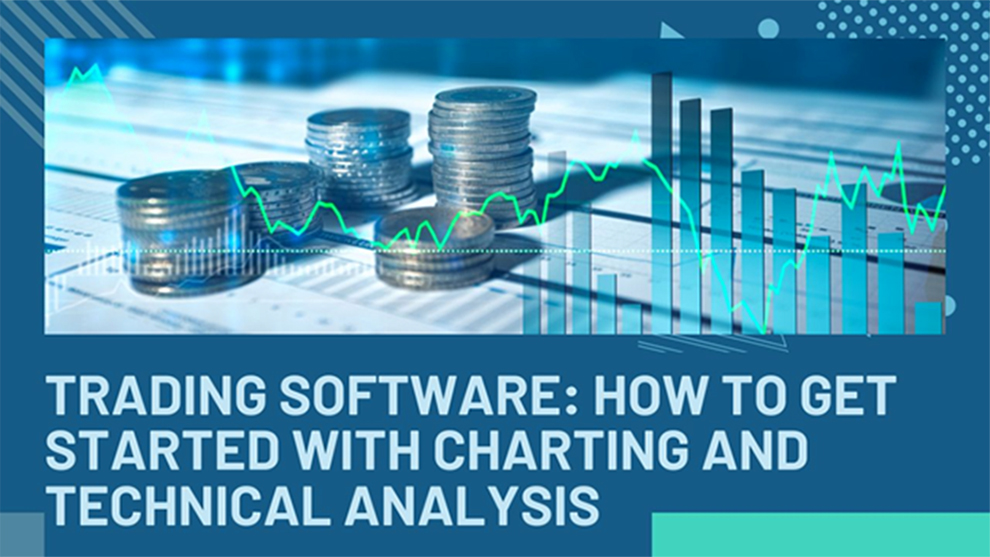Charting and Technical Analysis help you better understand the market based on trends and decide when to hold and when to sell stocks.
Charting and technical analysis are important parts of trading software and can help traders identify patterns and generate trading signals.
Charting allows users to plot multiple indicators on the same chart in order to compare different data points such as price or volume. Technical analysis tools can be used to identify support and resistance levels, identify trend direction, or indicate when to enter or exit a trade.
To get started with charting and technical analysis, it is important to understand how the indicators you are using work and how they can be used to support your trading strategy.
Once you have chosen the indicators that work best for you, it is important to practice using them in a trading simulator before launching into live trading.
Talking About Trading Software
Trading software is a tool that traders use to manage their trading activities and make informed decisions. Many types of trading software are available, ranging from primary execution platforms to complex and multi-faceted systems which provide a range of advanced features and tools.
Some of the key features that trading software may offer include:
- Provides real-time market data
- Allows backtesting and automated trading methods
- Provides risk management tools including take-profit and stop-loss orders.
- Access to a variety of markets and asset classifications
- Offers access to numerous brokers
- Enables users to alter the user interface
- It provides real-time order execution and monitoring and has a built-in news feed
Types Of Trading Software
1. Stock Trading Software
Stock trading software is a computer program that analyzes financial data and manages trading portfolios. It enables traders to identify profitable opportunities in the markets and monitor and manage their investments. The software can be used to access market data, execute trades, backtest strategies, and more.
Advantages
- Automates the trading process
- Helps identify new opportunities
- Allows for backtesting of strategies
- Streamlines the trading process
- Monitors investments in real-time
2. Forex Trading Software
Forex trading software is a computer program designed to help traders analyze foreign exchange markets and make informed decisions about their trades. It tracks and monitors currency prices, calculates risk, generates trading signals, and much more.
Advantages
- It helps traders make more informed decisions
- Allows for automated trading
- Identifies profitable trading opportunities
- Monitors currency prices in real-time
- Streamlines the trading process
3. Cryptocurrency Trading Software
Cryptocurrency trading software is a computer program that analyzes cryptocurrency markets and helps traders identify profitable trading opportunities. It can track and monitor currency prices, generate trading signals, and more.
Advantages
- Identify profitable trading opportunities
- Automate the trading process
- Monitor currency prices in real-time
- Generate trading signals
- Streamline the trading process
4. Options Trading Software
Options trading software is a computer program that helps traders analyze and manage their options trades. It can track and monitor option prices, generate trading signals, and more.
Advantages
- Automate the trading process
- Monitor option prices in real-time
- Generate trading signals
- Identify profitable trading opportunities
- Streamline the trading process
Understanding Charting And Technical Analysis
Technical analysis is a technique that traders and investors use to analyze financial markets and make informed decisions about buying and selling securities.
The main principle of technical analysis is that a security’s price and volume can be used to forecast future price movements.
Charting is a component of technical analysis that entails creating graphical representations of market data. It is used to identify patterns and trends in market data, which can then be used to make trading decisions.
Charting and technical analysis are two powerful methods used to analyze stocks, commodities, or any other financial instruments. Charting uses price data to create charts that show how the price of a particular asset has changed over time. Chart patterns can provide insights about the direction of the stock movement.
Technical analysis looks at trends, support and resistance levels, trading volumes, and more. It usually involves creating indicators such as moving averages, oscillators, and trend lines to help traders identify entry and exit points in the market.
Both charting and technical analysis can be used to provide valuable information to traders trying to make informed trading decisions.
Tools And Indicators
Line charts, bar charts, and candlestick charts are all common types of charts used in technical analysis. Line charts are created by connecting the closing prices of a security over a given period to form a continuous line.
In addition to the opening and closing prices, bar charts and candlestick charts show the high and low prices of a security over a given period.
Moving averages, Bollinger Bands, and the Relative Strength Index (RSI) is among the indicators and oscillators used by technical analysts to identify trends and make trading decisions.
These indicators are mathematical calculations based on a security’s price and/or volume that are displayed on the chart alongside the price action.
Importance
Charting and technical analysis are the cornerstones of effective stock market trading. Charting helps traders identify trends in the stock market, allowing them to make informed decisions about when to buy and sell securities.
Technical analysis can also be used to pinpoint chart patterns and levels of support or resistance that can indicate when a security is likely to move.
By combining charts and technical analysis, traders can get an edge when trading in the stock market, as they can determine when the optimal time to enter and exit a position is.
With this understanding, traders can be better equipped to make successful trades and maximize their profits.
Getting Started With Charting And Technical Analysis
Getting started with charting and technical analysis can be a fun and rewarding adventure. To get started, you can consider the below-given steps:
- Learn the fundamentals of charting:Before you begin charting and analyzing securities, you should first understand the fundamentals. Learn about various chart types and how to read them, including line charts, bar charts, and candlestick charts.
- Choose a charting platform:There are numerous paid and free charting platforms available for creating and analyzing charts. Choose a platform that includes the features and tools you need to analyze securities effectively.
- Study technical indicators:Technical indicators, such as moving averages, Bollinger Bands, and the Relative Strength Index (RSI), can help you identify trends and make informed trading decisions. Study each indicator and learn how to use them in your analysis.
- Practice with historical data:Before you start trading with real money, practice analyzing historical data using the charts and indicators you have learned. This will give you a feel for how to use the charts and indicators effectively and help you develop your trade style.
- Keep a trading journal:As you begin trading and analyzing securities, it’s important to keep a trading journal. Document your analysis, trades, and thoughts about the markets. This will help you refine your analysis techniques and improve your performance over time.
- Seek education and resources:Finally, seek out education and resources to help you continue learning and growing as a chartist and technical analyst. There are many books, online courses, and forums dedicated to technical analysis and charting, and taking advantage of these resources can help you become a more effective trader.
Related: Stock Trading Courses Online
Conclusion
In conclusion, charting and technical analysis are critical components of trading because they provide traders and investors with objective market views and historical data to help them make informed decisions.
Trading software can be a powerful tool to enhance your trading strategy. Charting and technical analysis are the foundation of chart-based trading and can help you get a better understanding of the market.
By becoming familiar with these tools, you will gain greater control over your trades and be in a better position to take advantage of opportunities the market presents.
It takes time to develop the necessary skills, but with dedication and commitment, you will soon find yourself on the road to success.





